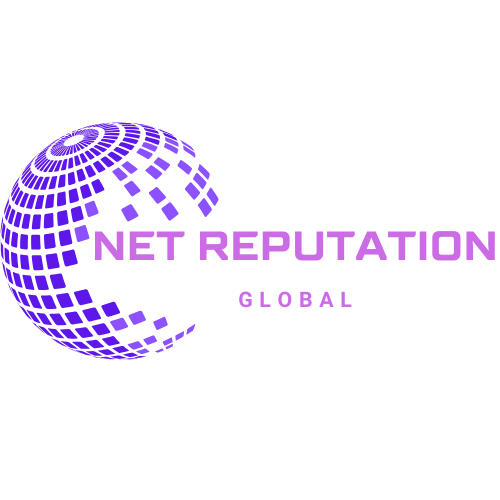
Hook & Why Now
Forget the cliche of spin doctors and free publicity. In today’s hyper-connected, distrustful world, Public Relations (PR) is the strategic heartbeat of any organization aiming to survive and thrive. It’s not just about getting in the news; it’s about building authentic relationships, safeguarding reputation, and driving tangible value in an era where a single tweet can ignite a global crisis and trust is the ultimate currency. This guide cuts through the noise, explaining what modern PR truly is, why it matters more than ever, and how to do it right.
What is Public Relations?
At its essence, Public Relations (PR) is the strategic communication process organizations use to build mutually beneficial relationships with their key audiences (or “publics”). These publics include:
- Customers & Prospects
- Employees
- Investors & Analysts
- Media & Influencers
- Regulators & Government
- Local Communities
The goal? Shape perceptions, build trust, manage reputation, and support business objectives.
What PR Does: Core Functions & Responsibilities
Modern PR teams wear many hats. Key functions include:
- Media Relations: Building relationships with journalists, pitching stories, managing interviews.
- Crisis Communications: Preparing for, responding to, and recovering from reputation threats (fast!).
- Internal Communications: Engaging and informing employees – your most critical ambassadors.
- Community Relations: Building goodwill and partnerships within local or interest-based communities.
- Public Affairs: Engaging with government and regulatory bodies on policy issues.
- Reputation Management: Proactively and reactively shaping how the organization is perceived.
- Content & Thought Leadership: Creating valuable insights to position key leaders as experts.
- Stakeholder Engagement: Systematically listening to and communicating with all key audiences.
PR vs. Marketing vs. Advertising: Clearing the Confusion
- Advertising: You pay for space/time to deliver a controlled message. (e.g., Buying a billboard ad).
- Marketing: The broad strategy for identifying customer needs and promoting products/services to meet them (includes advertising, sales, etc.).
- Public Relations (PR): Earning positive attention and goodwill through relationships and credible third-party validation (e.g., a journalist writing about you, an employee praising you online). Focuses on reputation and relationships, not just sales.
Why PR is Non-Negotiable in 2025
- Speed of Crisis: News (and misinformation) travels at light speed. PR is your first line of defense.
- Trust Deficit: People distrust institutions. Authentic PR builds crucial credibility.
- Information Overload: Cutting through the noise requires strategic storytelling and trusted voices.
- Employee Power: Employees are vocal brand advocates (or critics). Internal PR is vital.
- ESG & Social Responsibility: Stakeholders demand transparency and ethical action. PR communicates this.
- Business Impact: Strong reputation attracts customers, talent, investors, and partners.
Building a Winning Modern PR Strategy
Effective PR isn’t random acts of publicity. It requires a plan:
- Set Clear Goals: (e.g., Increase brand awareness by 20%, improve crisis readiness score, boost positive employee sentiment).
- Know Your Audiences: Deeply understand each key public – their concerns, channels, influencers.
- Craft Your Core Narrative: What’s your authentic story? What values do you stand for?
- Choose Integrated Tactics: Select the right mix of media relations, content, social, events, community work – aligned with marketing/sales.
- Measure What Matters: Go beyond clips! Track sentiment, share of voice, website traffic from PR, impact on lead gen or retention, employee engagement scores. (Filling Gap: Better Measurement)
- Be Proactive & Reactive: Build reputation daily and be ready for crisis.
The Critical Gap: Proactive Reputation Building & Authenticity
While crisis management is essential, true PR mastery lies in proactively building unshakeable trust. This requires:
- Radical Transparency: Own mistakes, share challenges (appropriately), be human.
- Purpose Beyond Profit: Clearly articulate and live your social and environmental values (ESG).
- Empathetic Storytelling: Connect on a human level. Share stories of real people impacted.
- Stakeholder Listening: Not just talking at audiences, but actively listening and responding (social listening, surveys, forums). (Filling Gap: Human Connection)
- Consistent Action: Your PR message must align with your company’s actual behavior. Authenticity is non-negotiable. (Filling Gap: Ethics/Authenticity Depth)
The Future of PR: Integration & Ethics
The most successful organizations treat PR not as a comms silo, but as the integrator:
- Seamless Comms: PR, Marketing, Sales, HR, and Leadership must share narratives and data.
- Data-Driven Insights: Using analytics to understand audiences and measure true impact.
- Ethical Imperative: Navigating deepfakes, misinformation, and AI responsibly demands strong ethical frameworks embedded in PR strategy. Transparency about AI use is becoming critical. (Filling Gap: Modern Ethics)
- Building Communities: Fostering genuine communities around shared values, not just broadcasting messages.
Net Reputation Global Integrated PR Framework

Manufacturing Client Success
Challenge: Unknown industrial equipment supplier
Our PR Strategy:
- Positioned CEO as automation futurist
- Secured 14 bylined articles in trade publications
- Created viral “Factory of Future” video series
- Resulted in $2.3M new leads within 8 months
Personal PR Services
We build:
- Award submission strategies
- TEDx speaker placement
- Biography development
- Wikipedia page creation (meeting notability guidelines)
Measurement That Matters
- Share of voice vs. competitors
- Message pull-through analysis
- Impact on sales cycles
- Executive visibility scoring
Conclusion
Public Relations is no longer optional window dressing. It’s a core strategic function essential for building trust, managing risk, attracting talent, and driving sustainable growth in a complex world. By focusing on authentic relationships, proactive reputation building, integrated strategies, and unwavering ethics, your organization can harness the true power of PR. Start by auditing your current reputation, listening to your stakeholders, and building a PR strategy grounded in authenticity and measurable impact.

